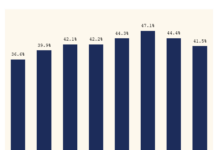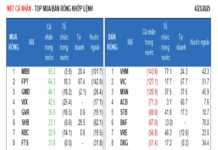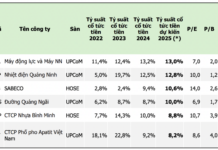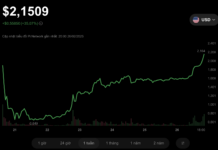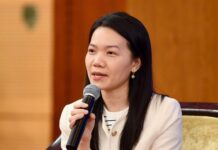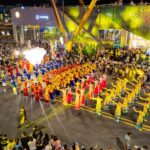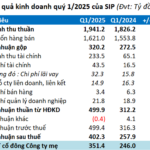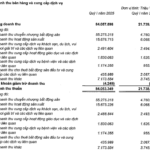“Vietnam’s Textile and Footwear Industries: Navigating Challenges for Sustainable Growth”
At the August trade promotion conference with the Vietnamese trade office system abroad, with the theme “Exchange on the Project to Establish the International Trade Center and Develop Raw Materials for the Fashion Industry. Role of the Vietnamese Trade Office Abroad”, Mr. Pham Tuan Anh, Deputy Director of the Department of Industry (Ministry of Industry and Trade) shared that textiles and footwear are two of Vietnam’s key export industries, with export turnover always growing over the years, with an average growth rate of over 10%/year.
RAW MATERIALS DEPENDENT ON IMPORTS
According to reports by the World Trade Organization (WTO) and World Footwear magazine, Vietnam is the world’s second-largest exporter of footwear and the third-largest exporter of textiles.
In the first six months of 2024, despite being significantly affected by the global economic downturn, the total export turnover of these two industries still reached nearly $30 billion, accounting for nearly 16% of Vietnam’s total export turnover and creating nearly 5 million jobs, or 22% of Vietnam’s industrial labor force.
Although the export turnover of the textile and footwear industries accounts for a large proportion of the country’s total import and export turnover, the contribution of domestic enterprises remains limited. More than 60% of textile export value belongs to FDI enterprises, although they account for only 24% of the number of enterprises; in the footwear industry, FDI enterprises account for nearly 80% of export turnover and only about 30% in terms of the number of enterprises.
In reality, Vietnam’s textile and footwear industries are still focused on the processing stage, creating low added value. The main sources of raw materials and accessories are imported from foreign markets, mostly from China, South Korea, and other ASEAN countries.

According to preliminary data from the General Department of Customs, in the first six months of 2024, imports of raw materials for the textile and footwear industries reached $13.42 billion, up 14.11% compared to the same period in 2023. Of this, fabric accounted for $7.24 billion; yarn and thread for $1.28 billion; cotton for $1.49 billion; and other raw materials, accessories, and equipment for textiles, garments, leather, and footwear for $3.41 billion.
Mr. Pham Tuan Anh assessed that the heavy dependence on imported raw materials could significantly impact the overall development of the industry in the future as many countries worldwide (such as the US and the EU) move towards Net Zero 2050 targets and impose stringent regulations on supply control, requiring products to meet high intra-bloc origin ratios.
Moreover, importing raw materials will affect the ability to take advantage of import tax exemptions for textile and footwear products in markets with which Vietnam has signed free trade agreements (such as EVFTA), and rules of origin are already being implemented.
THE CRUCIAL NEED TO DEVELOP TEXTILE AND FOOTWEAR RAW MATERIALS
Therefore, the representative of the Department of Industry emphasized the critical need to develop raw materials for the textile and footwear industries.
In December 2023, the Vietnam Leather, Footwear, and Handbag Association and the Vietnam Textile and Apparel Association sent a document to the Ministry of Industry and Trade seeking guidance on the policy to build a trading center for the development of raw materials for the fashion industry in Vietnam.
The construction of this center aligns with the orientation of developing the supply of raw materials for the textile and footwear industries, as stipulated in Decision No. 1643/QD-TTg dated December 29, 2022, by the Prime Minister, approving the Strategy for the Development of Vietnam’s Textile and Footwear Industries until 2030, with a vision towards 2035, and Resolution No. 115/NQ-CP dated August 6, 2020, by the Government, on solutions to promote the development of supporting industries.
The center is expected to be built with socialized capital, gathering domestic and foreign suppliers of raw materials for textile and footwear production to display and introduce their products, thereby shortening the time for finding suppliers and ensuring competitive prices…
At the same time, it will support enterprises in tracing the origin of raw materials for textiles and footwear to standardize and make the market transparent. It will also facilitate connections, trade, and exhibitions of products and technologies for producing textile and footwear raw materials.
In addition, the center will carry out activities to evaluate and test the quality of raw materials for textiles and footwear. It will also operate an information channel to update trends and technologies for producing textile and footwear raw materials to support and promote the production of domestic raw materials.
It is expected that in October, the Associations will organize a delegation to survey and learn from the experiences of China and other countries that have successfully implemented this model to perfect the project to ensure its practicality and effective operation in the future.
The establishment of the International Trade Center and the development of raw materials for the fashion industry is an issue that should have been addressed long ago but has not been resolved. Therefore, we need to expedite the development of the project concretely, including operational stages and policy recommendations… so that the center can be operational by 2025.
Uncovering Corruption: Strategies to Prevent the Concealment of Ill-Gotten Gains
The Government Inspectorate has released a report detailing the resolution of citizens’ petitions submitted prior to the 7th session of the 15th National Assembly.
The Big Win: Over 50,000 Attend Regal Group’s Victory Festival
This National Day, 2nd September, witnessed a spectacular celebration at the Regal Legend project site in Dong Hoi. Regal Group, the developer, hosted a ‘Victory Festival’, a musical extravaganza with a stunning fireworks display. The event attracted over 50,000 local residents and international visitors, a true testament to its appeal.







